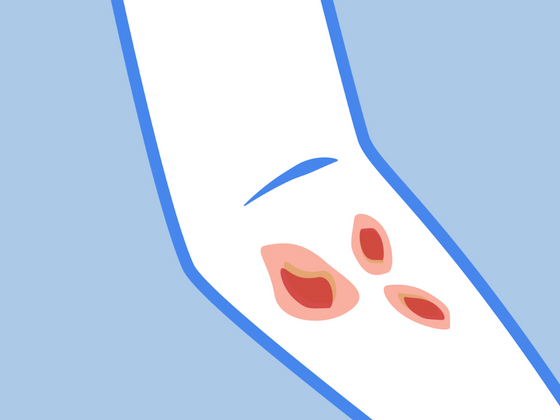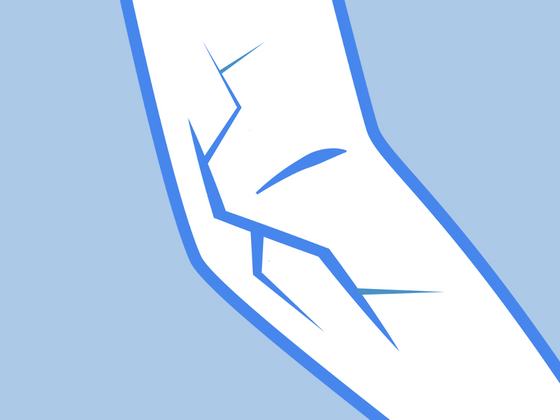If you've ever gone swimming in a lake or along the coast and later noticed an itchy rash, you may have experienced cercarial dermatitis, commonly known as swimmer's itch or duck itch. This allergic reaction occurs when tiny parasites in contaminated water accidentally penetrate human skin. While it can be uncomfortable, the good news is that it's not contagious and typically resolves on its own.
In this blog, we're going to explore:
-
Understanding the life cycle of the parasite and how certain species infect humans.
-
Recognizing the signs of swimmer's itch
-
Effective home remedies to soothe your skin
Read on to learn how to protect yourself from this skin condition and what to do if you get it.
What Causes Cercarial Dermatitis?
Cercarial dermatitis is caused by microscopic larvae from parasitic flatworms in their larval stage. These larvae are released into the water by infected snails, where they swim in search of a suitable host, such as infected birds or mammals. However, when they mistakenly come into contact with swimmer's skin, they attempt to burrow in it, leading to skin penetration and an itchy rash.
This disease control problem is commonly found in fresh or salt water, especially in shallow water near marshy areas, where infected snails thrive. Swimmers, waders, and people playing in infested water are at the highest risk, especially during the summer months when the larvae are most active.
Symptoms and Risk Factors
The itch is caused by the body's allergic reaction to the parasites. Symptoms typically develop within a few hours of exposure and may include:
-
Red, itchy skin rash
-
Small blisters or bumps
-
Intense itching
-
Burning or tingling sensations in affected areas
The rash usually appears on skin covered by contaminated water, such as the legs, arms, or torso. While it can be extremely irritating, cercarial dermatitis occurs only on the skin and does not spread within the human body.
Risk factors
-
Swimming in freshwater or saltwater where cases of swimmer's itch have been reported.
-
Visiting marshy areas with large populations of infected snails and infected birds.
-
Not towel drying immediately after swimming, allowing the larvae more time to penetrate the skin
-
Ignoring posted warnings about contaminated water.
How to Prevent Cercarial Dermatitis
-
Avoid feeding birds near swimming areas, as this attracts hosts for the parasites.
-
Swim in a swimming pool rather than infested water.
-
Choose deeper areas over shallow water, where larvae concentrations are highest.
-
Rinse off and towel dry immediately after swimming to remove any larvae before they burrow into the skin.
Natural Treatment Options
While swimmer's itch can be irritating, it is usually harmless and will clear up within a few days to a week. However, to relieve symptoms and speed up recovery, consider the following home remedies:
Apply a Cool compresses
Applying a cool compress to the affected areas can help soothe irritation, reduce inflammation, and provide immediate relief from the discomfort of itchy skin.
Embrace Nature's Power
Pure Emu Oil is an excellent solution for soothing the discomfort of swimmer's itch. Its deep moisturizing properties help to calm irritated skin, reduce redness, and promote healing of the rash caused by cercarial dermatitis. The anti-inflammatory benefits of this 100% pure emu oil make it an ideal addition to your skincare routine, providing relief from itching and helping to restore your skin to its natural, healthy state.
Use Baking Soda Paste and Oatmeal Baths
To help soothe the discomfort of swimmer's itch, a baking soda paste can be an effective remedy. Simply mix baking soda with a small amount of water to create a paste, then apply it directly to the affected areas to help reduce itchy skin and calm irritation. Additionally, soaking in a colloidal oatmeal bath can provide significant relief. The soothing properties of colloidal oatmeal alleviate the itching and redness while adding Epsom salts to warm water can further ease discomfort and help reduce inflammation.
Avoid scratching
Though tempting, scratching can lead to skin conditions like infections. These ScratchSleeves with Scratch Mittens are an excellent choice for preventing your child from scratching itchy, irritated skin. The design helps protect delicate skin from further damage while keeping it cool and comfortable, making them perfect for use during the day or night. The soft, stretchy cotton sleeves and silk mittens ensure your child remains comfortable while promoting healing.
Medical Treatments:
If symptoms persist or worsen, a healthcare provider may suggest:
-
Prescription-strength lotions with stronger anti-inflammatory effects.
-
Antihistamines to reduce the allergic reaction.
-
Seeking medical attention if a secondary bacterial infection develops.
Relieve the Itch and Protect Your Skin
By understanding the causes and symptoms of cercarial dermatitis, you can find relief from the itching, promote faster healing, and reduce the likelihood of future flare-ups, ensuring a more comfortable and enjoyable experience in the water.









